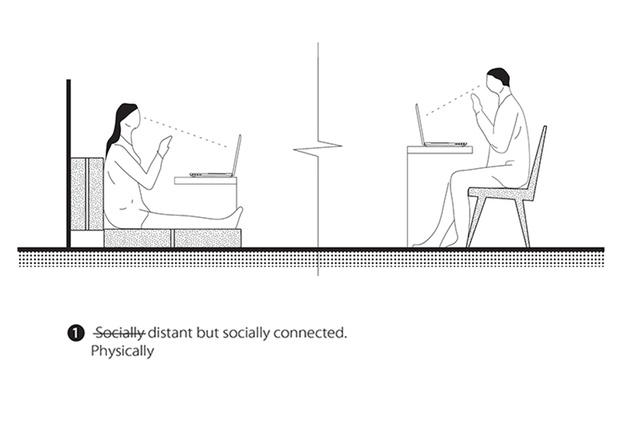Designer’s guide to COVID-19: Physical distancing
Multi-disciplinary designer Raimana Jones, of Atelier Jones, uses dimensioned drawings and diagrams to give some perspective (and some humour) to the latest info about COVID-19.
I wanted to use my creativity and skillset to make something useful to help stop the spread of COVID-19 and to lighten the mood in these uncertain times. Using the latest information published about the virus, I’ve translated these into dimensioned drawings and diagrams hoping this would give some perspective (and some humour) into things like what does a 2-metre gap look like between two people, or in some of the unusual and selfish behaviour generated by this pandemic e.g. panic buying toilet paper.
The graphic style of this series is inspired by Ernst Neufert’s book, Architects’ Data first published in 1936, a classic in the architecture and design world. The entire book is filled with dimensioned illustrations: dimensions of different body positions and dimension guidelines in practically all areas of the built environment from residential, supermarkets to sports fields. These have acted as guidelines for design. Here, I’ve re-adapted this concept for a COVID-19 pandemic scenario hence the title: ‘Designer’s Guide for COVID-19’.
Note: Architects’ Data original book was first published in 1936, so an unbalance of genders in roles and ratio was evident in the human figures drawn. I’ve amended a lot of these from the original to balance things out.
All dimensions are in millimetres. Sources are mainly around New Zealand regulations and guidelines; some are from other sources from other parts of the world.
Please refer to covid19.govt.nz for the latest official information on how to beat the spread of COVID-19.
Physical Distancing
The coronavirus isn’t airborne meaning the virus can only be transmitted from surface to surface. (Editor’s note: the latest evidence on airborne transmission of COVID-19 is inconclusive) Things like handshakes, rubbing your eyes or nose will increase the spread of the virus. The coronavirus can also use saliva droplets as a surface. Generally, the exhalation of saliva droplets during relaxed conversations travels about 1 meter. When speaking loudly or coughing, droplets can travel up to 1.85 meters before they fall onto the ground (source). That is why physical distancing is a very effective precaution against the spread of the coronavirus.
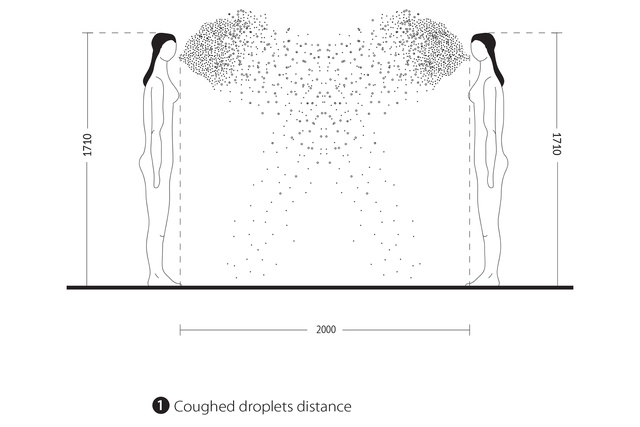
A really good video that illustrates how far exhaled airflow travels: Shadowgraph Imaging of Human Exhaled Airflows.
1.5m to 2m is the distance recommended by the ministry of health (2m for level 4 alert). I didn’t realise how far that was until I scaled these drawings. 1.5m is equivalent to approximately two (adults) arms fully stretched and 2m is equivalent to approximately three arms fully stretched.
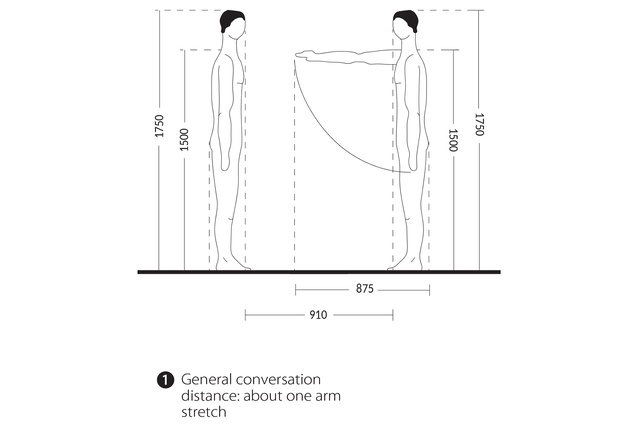
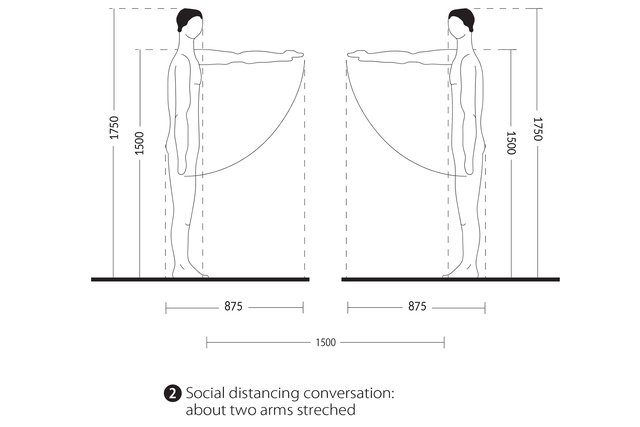
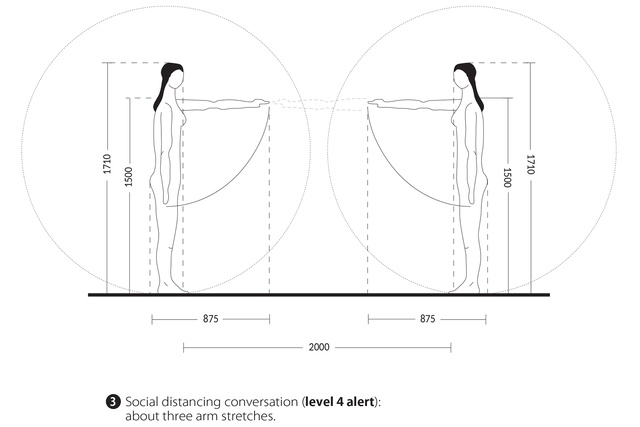
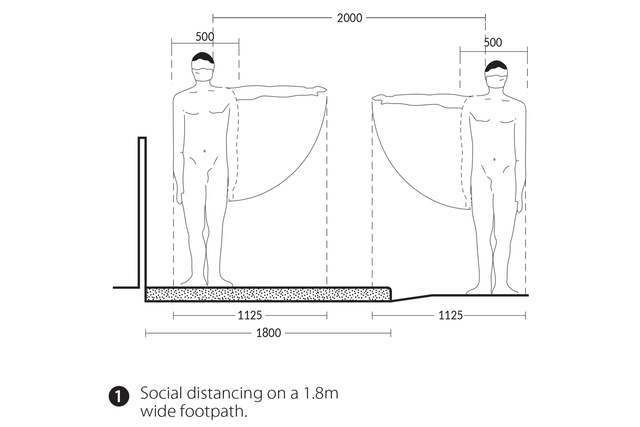
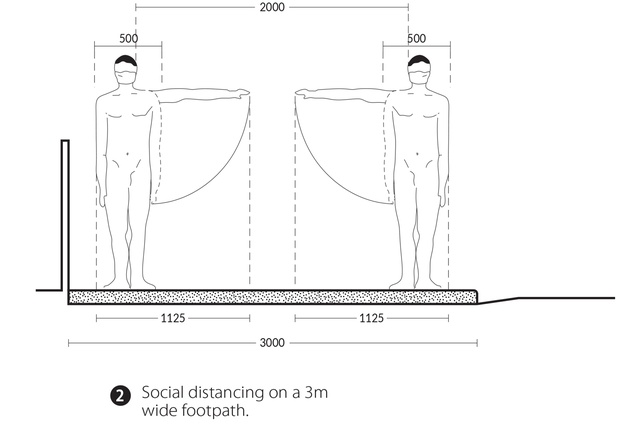
Generally in New Zealand, the minimum footpath width is 1.8m and the maximum width is 3m. If you’re walking on a 1.8m wide footpath and someone is coming towards you, then you know you’d need to step onto the road (which is empty anyway) to leave adequate distance. (Source: NZTA)
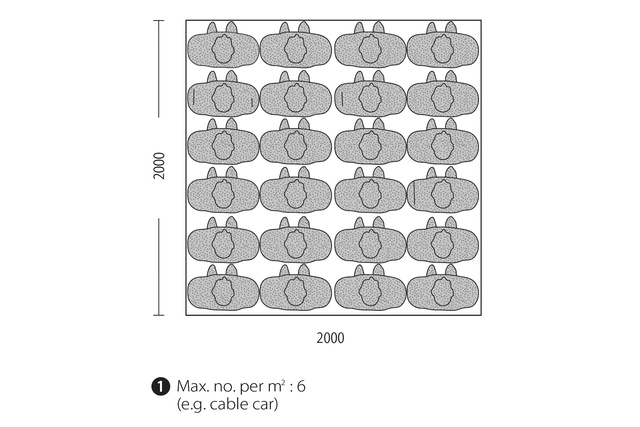
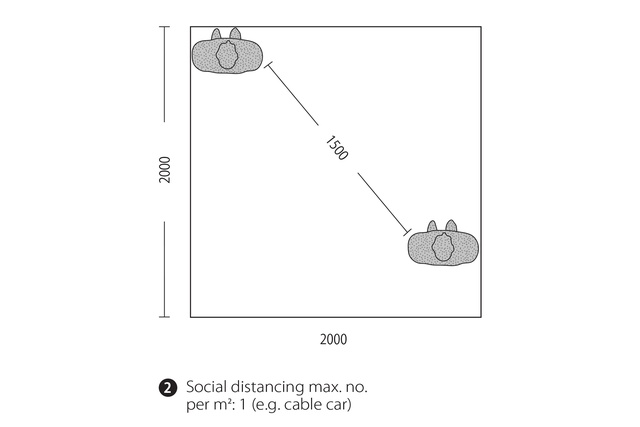
Probably best to use the stairs instead of a lift.
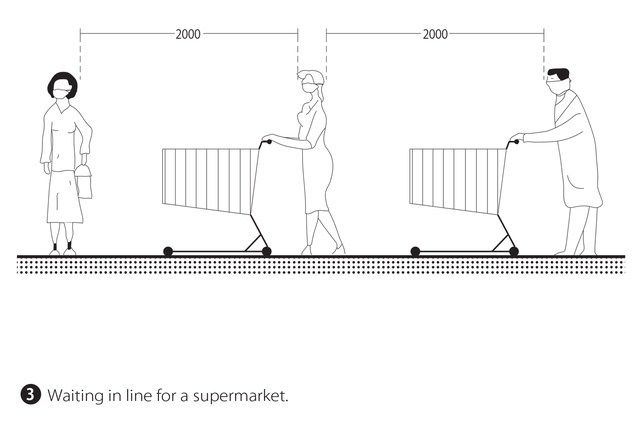
If you’re queueing to get into a supermarket, use a trolley as a spacer in between yourself and the person in front of you and remember not to touch your face.
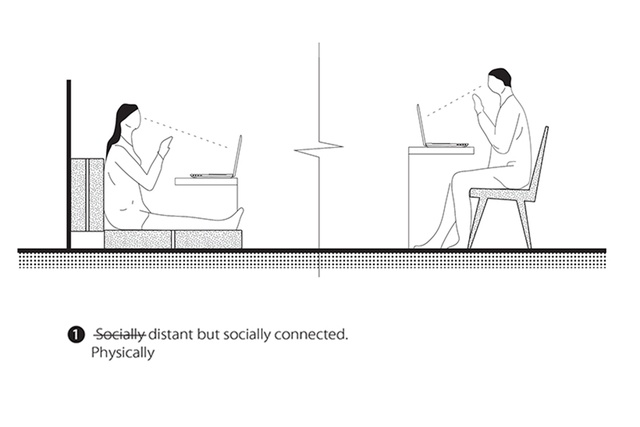
We may be more physically distant but we are still socially connected. It’s time to video call a friend and share what you’ve cooked today!
This article first appeared on the Atelier Jones website. See the original article here.

